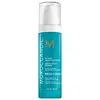What's inside
What's inside
 Key Ingredients
Key Ingredients

No key ingredients
 Benefits
Benefits

 Concerns
Concerns

 Ingredients Side-by-side
Ingredients Side-by-side

Water
Skin ConditioningCetearyl Alcohol
EmollientGlycerin
HumectantIsopropyl Myristate
EmollientHydroxypropyl Guar
Emulsion StabilisingBis-Diglyceryl Polyacyladipate-2
EmollientCetearyl Glucoside
EmulsifyingSodium Benzoate
MaskingCocos Nucifera Oil
MaskingCaprylyl Glycol
EmollientButyrospermum Parkii Butter
Skin ConditioningSclerotium Gum
Emulsion StabilisingBenzyl Salicylate
PerfumingCitric Acid
BufferingLinalool
PerfumingBenzyl Alcohol
PerfumingHoney Extract
Humectant2-Oleamido-1,3-Octadecanediol
Skin ConditioningParfum
MaskingWater, Cetearyl Alcohol, Glycerin, Isopropyl Myristate, Hydroxypropyl Guar, Bis-Diglyceryl Polyacyladipate-2, Cetearyl Glucoside, Sodium Benzoate, Cocos Nucifera Oil, Caprylyl Glycol, Butyrospermum Parkii Butter, Sclerotium Gum, Benzyl Salicylate, Citric Acid, Linalool, Benzyl Alcohol, Honey Extract, 2-Oleamido-1,3-Octadecanediol, Parfum
Cyclomethicone
EmollientDimethicone
EmollientPhenyl Trimethicone
Skin ConditioningBis-Vinyldimethicone
Diphenyl Dimethicone
EmollientParfum
MaskingArgania Spinosa Kernel Oil
EmollientHydrogenated Vegetable Glycerides Citrate
EmollientTocopherol
AntioxidantAscorbyl Palmitate
AntioxidantBeta-Sitosterol
Emulsion StabilisingGlyceryl Linolenate
EmollientLecithin
EmollientHydrogen Dimethicone
Squalene
EmollientPropylene Glycol
HumectantCyclomethicone, Dimethicone, Phenyl Trimethicone, Bis-Vinyldimethicone, Diphenyl Dimethicone, Parfum, Argania Spinosa Kernel Oil, Hydrogenated Vegetable Glycerides Citrate, Tocopherol, Ascorbyl Palmitate, Beta-Sitosterol, Glyceryl Linolenate, Lecithin, Hydrogen Dimethicone, Squalene, Propylene Glycol
Ingredients Explained
These ingredients are found in both products.
Ingredients higher up in an ingredient list are typically present in a larger amount.
Parfum is a catch-all term for an ingredient or more that is used to give a scent to products.
Also called "fragrance", this ingredient can be a blend of hundreds of chemicals or plant oils. This means every product with "fragrance" or "parfum" in the ingredients list is a different mixture.
For instance, Habanolide is a proprietary trade name for a specific aroma chemical. When used as a fragrance ingredient in cosmetics, most aroma chemicals fall under the broad labeling category of “FRAGRANCE” or “PARFUM” according to EU and US regulations.
The term 'parfum' or 'fragrance' is not regulated in many countries. In many cases, it is up to the brand to define this term.
For instance, many brands choose to label themselves as "fragrance-free" because they are not using synthetic fragrances. However, their products may still contain ingredients such as essential oils that are considered a fragrance by INCI standards.
One example is Calendula flower extract. Calendula is an essential oil that still imparts a scent or 'fragrance'.
Depending on the blend, the ingredients in the mixture can cause allergies and sensitivities on the skin. Some ingredients that are known EU allergens include linalool and citronellol.
Parfum can also be used to mask or cover an unpleasant scent.
The bottom line is: not all fragrances/parfum/ingredients are created equally. If you are worried about fragrances, we recommend taking a closer look at an ingredient. And of course, we always recommend speaking with a professional.
Learn more about Parfum